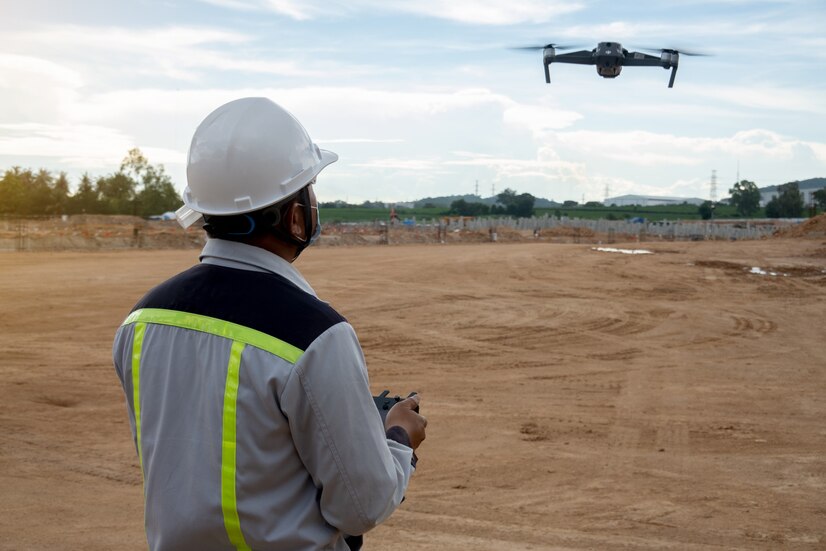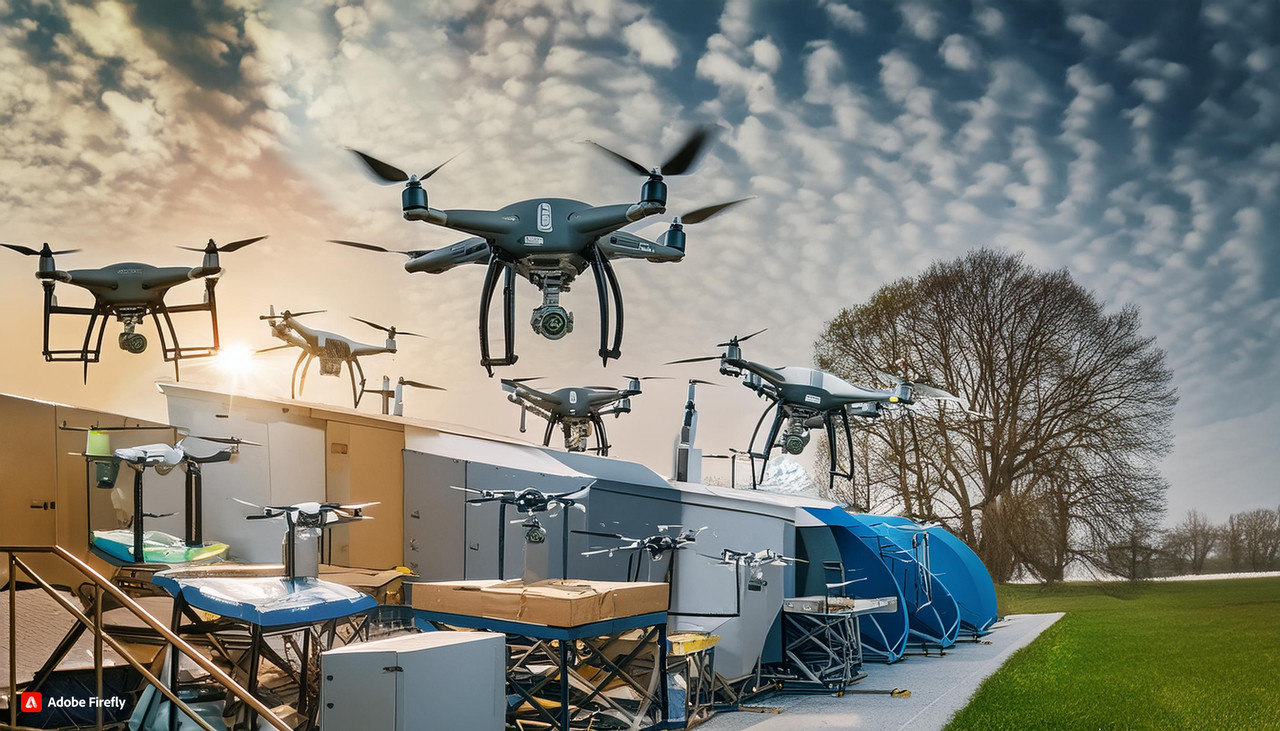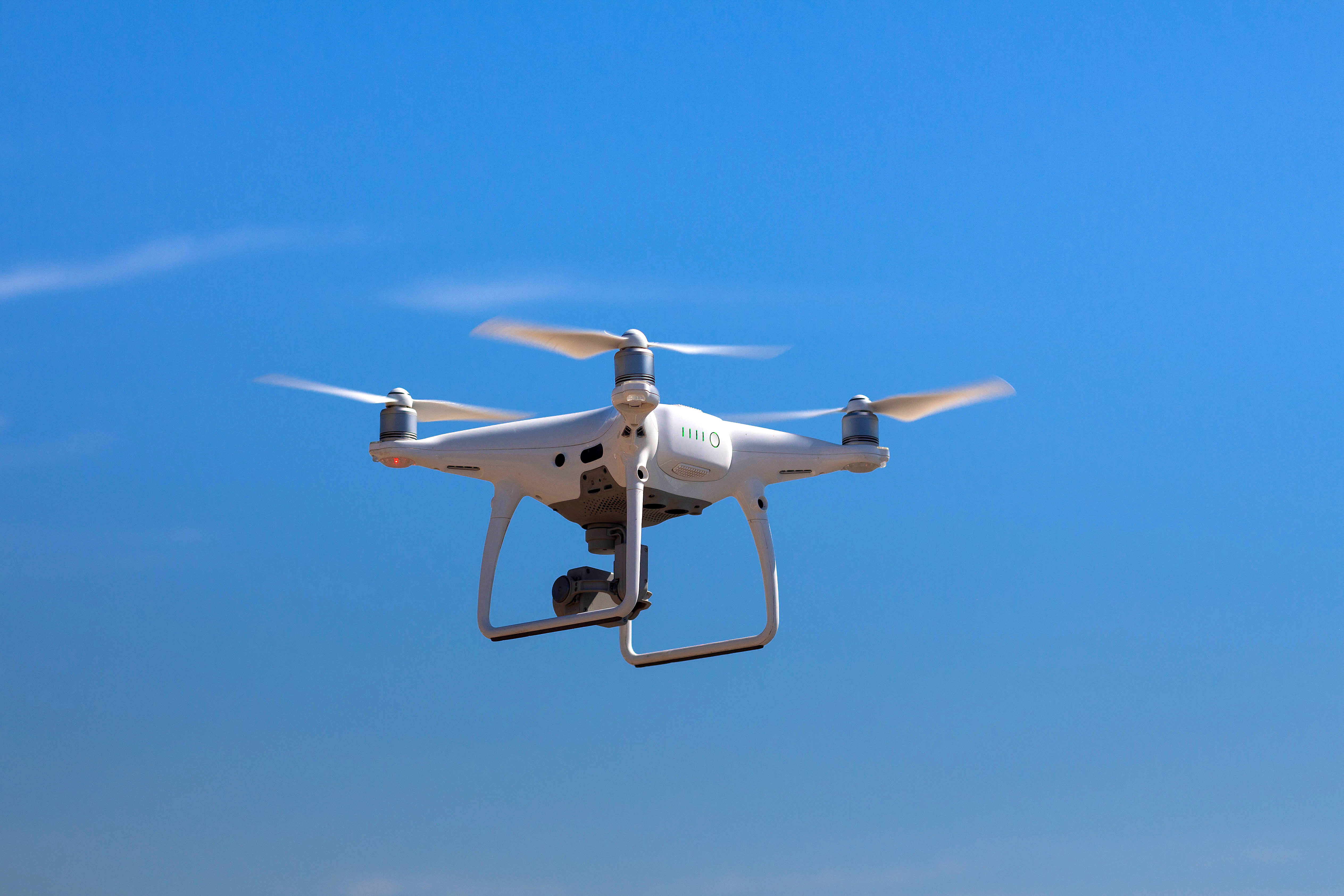
Exploring the Role of Drones in Construction: Improve Site Mapping and Surveying

The construction industry is strongly related to the tools and other apparatuses required to do the job properly. No project can come to life without the correct tools. Construction field productivity software allows construction teams to build projects as they ought to be delivered.
Advances in technology have continuously driven the construction industry forward. While hand tools have been used for ages in this field, power tools have allowed builders to complete projects in less time, improving productivity, effectiveness, and prospects for contractors at every level. Drones are flying machines that can be remotely flown.
Drones were initially developed for the military. However, with time, they have been used in delivery, agriculture, law enforcement, and construction. In this blog, we will focus on drones in construction and some of its benefits.

Pre-construction Site Surveys
Most construction projects start with civil plans. Those plans start with a site survey involving the expansion of topographical maps, particularly for large projects. These maps display terrain information, including ground elevations and features that notify how these structures will be designed and constructed.
Making and updating topographic maps is expensive and time-consuming. Drones can map large land areas, saving time in gathering the information required to develop them and visualizations for modelling.
In several construction contracts, the contractor is accountable for returning a site to its original condition. To document site conditions, the contractor should conduct a site survey before the start of the work. A construction drone can take quality area images, offering photographic documentation of the site's construction.
This drone survey before the start of the project can also help a contractor develop more precise bids, save money, and avoid delays in the completion of the projects. A project manager can examine whether site conditions are as per the plan or not. Drone photos may disclose that quite a few utility conflicts have not been taken into account at the time of planning plans and if there is a need for some amendments before the start of the project.

Inspecting and Monitoring the Construction Project
One prime use of drones in construction is inspecting and monitoring a project's progress. Project management is important in ensuring that everything is done according to plan and on time.
Traditional construction project inspections involve people overseeing fieldwork. Drone inspection ensures fall protection and other safety measures. It provides enhanced safety and security and is much less expensive. Drones also allow one to observe the construction project remotely, which is significant for complex construction programs.

Boosting Productivity and Accountability
Developing projects and schedules is significant in planning and forecasting. Labour hours and efficiency rates estimate the cost and time of completing activities and projects. If project progress does not match prospects, a construction drone helps senior management observe site issues that affect accountability.
Tracking and certifying manhours are also important to record keeping, accounting, and payroll. This is particularly true for overtime work, which is typically charged an advanced rate. For corporations that offer verification, drones can confirm that the work was done correctly, at the right time, and by the right people.
Equipment Management and Tracking
Construction engineers and managers must monitor many elements, including equipment, performance, and labour. When work is added to the contract through a change order, there are typically diverse charge rates for equipment in usage, idling equipment, and equipment on standby.
Drones can help with project oversight, cost negotiation, and verification of tools and machines. They can also help engineers communicate with equipment owners about malfunctions and failures that can cause project delays and additional costs.

Improved Safety Management and Coordination
Safety management developments might be the most significant benefits of using drones in construction. Active work zones sometimes have the most grave conditions for the workers on the construction site.
Proactive safety management plans are important in this industry, and drones offer an effective and lucrative way of monitoring the safety of construction sites. A safety officer can use drones to check remote sites for ongoing and possible problems.

Surveillance and Security of the Construction Sites
Most construction operations are not continuous. Shifts end, leaving the sites with expensive equipment and materials, both installed and uninstalled. These items are at risk of being stolen. Apart from the cost of stolen items, any theft on the sight has a negative impact on schedule and budget because of lost time.
A construction company can use drones to offer site surveillance. The drones can remotely confirm the location of tools and materials and recognize intruders and unlawful action on a project.

Construction Marketing and Lifecycle Operations
Photography is a prime benefit of using drones in construction. This is correct for every phase of the project and the post-construction phase. For contractors, superior images of completed projects play an important part in sales and marketing.
Practitioners must frequently offer qualifications, demonstrating they have the information and experience for future contracts. Rather than paying for a helicopter pilot and photographer to take aerial photos, you can save time and money and alleviate the risks of human processes with drones.
Drone construction inspection is valuable to continuing projects. This functionality is also beneficial for lifecycle processes and maintenance. Operators can use drones to observe processes, check for errors, and plan maintenance.
Integrated project delivery integrates design, construction, and operations management as a single effort rather than separate bids for each phase. Drones can be accounted for and integrated throughout a construction project's lifecycle, improving certification and asset management.
Final Few Words
With many benefits of drones for construction, infra and construction companies are recruiting skilled drone operators. If you are also in line with joining a construction company as a drone operator, then you should have complete control over the skills that you hone. Here at Flapone Aviation, we excel in providing you with quality and state-of-the-art training to help you get the desired remote pilot certification. We are also a DGCA-approved drone pilot training institute, so shut the door for any doubts and join us!
Related Blog
Latest updates and insights from Flapone Aviation.

What Types of Drones Are Present in the Market?
October 8, 2024

How to Become a Pilot After 12th in India?
February 7, 2025

What are the Basics of Drone Piloting?
February 7, 2025




Author Bio
A dynamic and seasoned content writer with 6 years of experience curating content for different platforms. With the knowledge of all the cogs of content writing and SEO, he has served in various industries. He believes that content is the kingpin, and if penned well, it has a lasting impact on the minds of the readers. Apart from content creation, he is also an ardent poetry lover and performer. He has two publications of his poetry collection, namely Alfaaz and Chestha